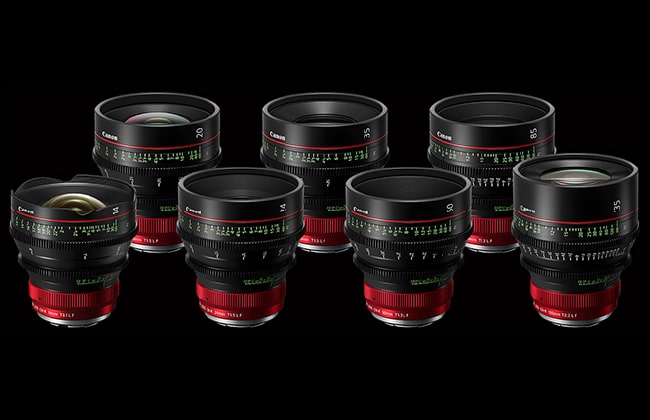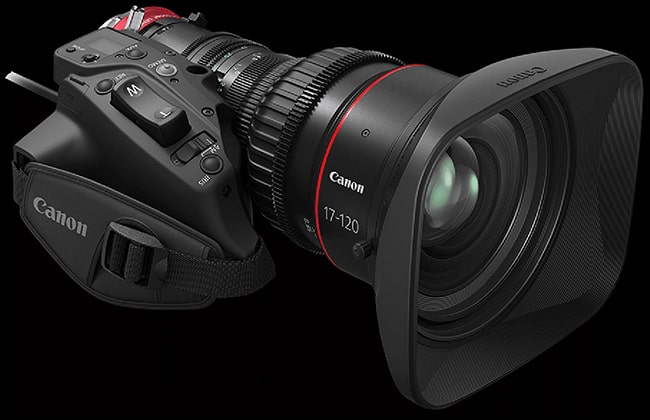The World of Cinema Lenses


Canon began developing camera lenses in the mid-20th century. As the world’s leading optical manufacturer, it has consistently led the way in market advances, producing a number of genuinely revolutionary lens products.
The Cinema EOS System, first launched in 2011, was a major step forward in the market for cinematography. The EOS system continued to evolve with the launch of a new generation of RF lenses, and the possibilities are now being expanded into the market for cinematic lenses.
Canon is in the process of launching a lineup of lenses, one after another, to stimulate the imagination of content creators and enrich their power of expression.
Lineup
A lens lineup based on the RF-mount design
A track record of developing cinematic lenses that have revolutionized the movie industry
In 2011 Canon entered the movie production industry, the pinnacle of image production. The company combined the CMOS sensors it develops and produces in-house with advanced imaging engines, high-density mounting technology for components, and the advanced optical technology that Canon has nurtured for decades. These strengths have been merged in a series of interchangeable cinematic lenses. These lenses have since been selected by numerous filmmakers who appreciate unique ideas and advanced technologies.

These models were the first Canon Cinema Lenses to incorporate a drive unit as a standard feature. The drive unit provides smooth operability similar to that of lenses made for television broadcasts, including high-speed zoom, focus, and aperture settings that instantly respond to the photographer’s adjustments.

CN7x17 KAS S E1
Canon launched the Flex Zoom Lens series, a series of new lenses that offer photographers a wider range of cinematic expression while streamlining the video production process. Compatible with cameras with full-frame and large-format image sensors, the series achieves T2.4 brightness across the entire zoom range. The lenses help users improve the efficiency of their photography and reduce costs. In 2023, products compatible with Super 35mm sensors were added. These products can be used for a wide range of production purposes, such as filming movies, dramas or commercials.

FLEX-ZOOM-LENS Series
Since the launch of the EOS R system, filmmakers have eagerly awaited the introduction of cinematic lenses that are compatible with RF mount. The series of RF-mount lenses Canon began to release in 2024 are compatible with the RF-mount communication protocol, which greatly enhances cooperation with the camera. This makes video shooting more efficient not only when actually shooting, but also in the editing and post-production process.

Ongoing progress in imaging technology has resulted in the introduction and rapid popularization of virtual reality (VR) movies, which can make video shooting even more efficient. Canon developed the Canon Virtual Production System, which allows lenses in the RF-mount PRIME Lens series and CN7x17 KAS T/R1 to output metadata to a cinematic camera, for VR production. When used with a compatible camera, the system supports high-precision CG processing both in real-time and in post-production.

CN7x17 KAS T/R
Canon technology supports superior image resolution and operational ease
8K Image Quality
RF cinematic lenses are compatible with the Super 35mm image size, which was the standard for movie cameras throughout the conventional film era. The lens combines Canon’s optical technologies to provide excellent correction of various aberrations and high resolution from the center to the periphery of the image. The lenses can be used with both 4K and 8K cameras. They offer high contrast while maintaining superior resolution, to deliver vivid 8K images. The lens suppresses the possibility of lens flare or ghosting, even in backlit conditions, to achieve crisp, clear images.

Integrated Color Balance
The color balance of Canon’s Cinema Lenses emphasizes the warm tones favored in film production, capable of reproducing human skin tones in realistic tints. The color balance of all the lenses has been strictly standardized so that users can be assured of stable color reproduction even if they change lenses in the same scene. To achieve this precision, anti-reflective coating technologies such as Super Spectra Coating are employed, to correct even slight alterations in color caused by the composition of the glass.
Suppressing of Focus Breathing
Focus breathing occurs when the focus lens group shifts, causing a change in magnification. The optical design of RF Cinema Lenses suppresses focus breathing, to minimize any fluctuations in the field of view while ensuring a stable frame even when there is a significant change in the focus.


* This picture is just an image.
Eleven-Blade Diaphragm
In general, the more blades an aperture has, the closer the aperture opening becomes to a perfect circular shape. This contributes a rounded, natural bokeh effect at all aperture ranges from narrow to wide open. Canon’s RF Cinema Lenses are equipped with an odd number of diaphragm blades, which helps suppress the glare phenomenon that can occur when light is diffracted from opposite, parallel directions. This can intensify the reflected light, causing an unnatural glow.

Integrated Operability
The front diameter of Prime Lenses is standardized. Accessories with the same mattebox can be used without modification, even when changing lenses. Since the focus and iris gear positions are also standardized, the user does not have to adjust the position of the follow focus and other accessory gear when changing lenses. This allows them to quickly get ready to shoot.

Adjustable Flange Back
Zoom lenses and servo lenses for the cinematic system are equipped with an adjustable flange back mechanism on the mount. This makes it easier for the user to adjust at the shooting venue, and enables excellent optical performance with a wide selection of cameras.

Excellent Visibility
The focus ring has indicators and indicator lines on both the left and right sides of the lens, which can be checked even from the right side of the lens. A luminescent coating on one side of the indicator display helps to enhance visibility when shooting at night or in dark conditions.







